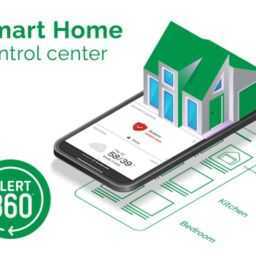New Technology Empowers Families To Improve Communication, Learning And Cognition At Home
Most of us know a child with a speech, language or learning disability or an adult who has communication or cognitive deficits from a stroke or head injury. Formal treatment typically ends too soon- leaving people with untapped potential. The schools often only provide special speech therapy services for students who are struggling academically. Many students with articulation disorders and subtle language and learning challenges are not seen for remediation. Insurance has placed increasingly stringent limits on the therapy for stroke and head injury survivors. Recent research has shown that the brain is capable of making new neurological connections when properly stimulated, but it is often difficult for family members to know the best way to provide the stimulation. Many families do not have easy access to a speech-language pathologist skilled in the use of technology to enhance progress or can not afford to pay privately for ongoing therapy.
Application sharing is a new technology which empowers rehabilitation and education professionals who specialize in using technology to help families who would like to play an active role in the treatment process. Using screen sharing technology, professionals are able to expose families to software, devices, resources, and strategies that may help their loved ones reach their greatest potential. Families participate at home with their computers- either a PC or a Mac. There is no need for participants to download any software. Computer expertise is not needed to participate in this program, but high speed internet access is required. The therapists invites the family to join “application/screen sharing” sessions. Participants view the therapist’s software on their monitor and listen to personalized presentations so that they can learn to use the software with their family member. Control of the software can be turned over to the family who can then give the programs a try from a distance. Sessions can be recorded for later viewing. Multiple family members can participate from different locations. The goal is that after a few sessions, the family will feel comfortable helping the person with the disability who can then become independent with an effective home practice program.
Computers can provide a new world of independence for people with physical, communication, or cognitive disabilities. Online sessions can include suggestions to target the recovery of specific communication skills, the development of alternative and compensatory strategies with a heavy emphasis on the most appropriate technology, the accessing of community resources and the development of a “life plan” to improve overall quality of life.
Acting as an advocate is not easy. There is a great deal to learn to help your loved one who may have challenges with talking, reading, writing, thinking and remembering. Time, money and limited access to skilled professionals often hinder an advocate’s ability to help. This new ability for professionals to provide help from a distance limits these barriers and enhances a family’s ability to empower their loved ones with the many benefits of technology in education and rehabilitation.
People challenged by disabilities can benefit from technology in many aspects of their lives. Technology can provide clients with a means to compensate for difficulties as well as to strengthen weak skills. Computers and other devices, when selected and used properly, can help improve communication and cognitive skills related to education, employment, recreation, and social and medical needs. Assistive technology can help individuals increase independence, build self-confidence and self-esteem, and improve quality of life. Children and adults with a broad range of difficulties resulting from strokes, head injuries, degenerative diseases, developmental delays and disorders and learning differences can independently handle a wider range of activities with the help of software and devices to read, write, organize, remember, learn, communicate, and search for information.
Many software products and devices on the market today are affordable and easy to use. These tools were produced for a wide variety of audiences-some for people with special communication or cognitive needs, others for people learning English as a second language, people with low vision, or mainstream society. In the hands of a creative user, these products can unlock the potential of many clients. Software that reads text aloud on the computer can be used to help improve reading, writing, remembering and talking. Drill and practice software can be used to maximize new learning. Word prediction technology can help users thinking of words and voice recognition technology can help people who can speak but not type. There are adapted email programs, free videoconferencing programs and inexpensive online programs which can be used to help people independently practice and work toward reaching their goals.
technology
#Technology #Empowers #Families #Improve #Communication #Learning #Cognition #Home
Will be pleased to have you visit my pages on social networking .
Facebook page here.
Twitter account is here.
Linkedin account here
Post byBedewy for info askme VISIT GAHZLY




